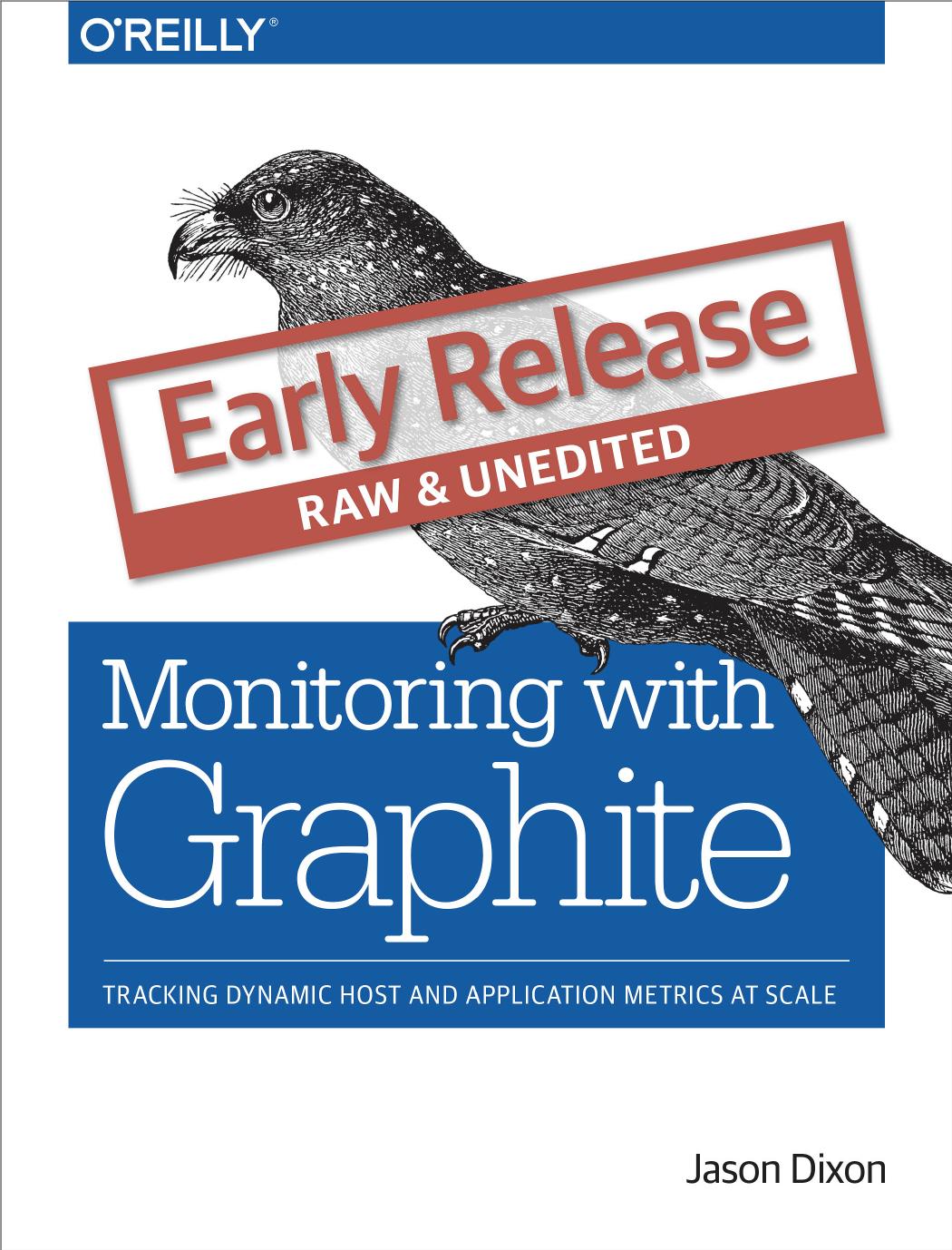Monitoring with Graphite by Jason Dixon

Author:Jason Dixon
Language: eng
Format: epub, mobi, pdf
Publisher: O'Reilly Media
Published: 2017-03-27T04:00:00+00:00
Figure 6-13. Discovering series outliers with mostDeviant()
While mostDeviant() definitely has value for weeding through noisy metrics, it can resemble a blunt force object at times. Sometimes you need a little more surgical precision with your filters. Often, I’m faced with the prospect of deciphering a graph where the scale has been thrown out of whack due to an accidental or anomalous datapoint. It doesn’t always have to be a malignant metric; sometimes it’s just a value that’s so obtuse that it gets in the way of an otherwise straightforward troubleshooting operation.
In these cases, it helps to be able to isolate and ignore those values. Graphite has a handful of functions for excluding values above or below a given numeric threshold. Depending on the function, the threshold can represent either a static value or a percentile. These are the permutatively named: removeAbovePercentile(), removeBelowPercentile(), removeAboveValue(), and removeBelowValue().
Figure 6-14 demonstrates the effect of a single “bad” datapoint. This particular metric measures the run time of a batch job, usually hovering between 900-1000ms. A single anomaly was identified and resolved, but its impact is felt long afterwards. The team responsible for this app can’t easily tell if there’s a 10–20% performance regression (the sort of thing you might look for during normal development cycles) due to a spike that happened hours in the past.
Download
Monitoring with Graphite by Jason Dixon.mobi
Monitoring with Graphite by Jason Dixon.pdf
This site does not store any files on its server. We only index and link to content provided by other sites. Please contact the content providers to delete copyright contents if any and email us, we'll remove relevant links or contents immediately.
Deep Learning with Python by François Chollet(15032)
The Mikado Method by Ola Ellnestam Daniel Brolund(12292)
Hello! Python by Anthony Briggs(12183)
OCA Java SE 8 Programmer I Certification Guide by Mala Gupta(11550)
Dependency Injection in .NET by Mark Seemann(11336)
Algorithms of the Intelligent Web by Haralambos Marmanis;Dmitry Babenko(10150)
The Well-Grounded Java Developer by Benjamin J. Evans Martijn Verburg(9811)
Grails in Action by Glen Smith Peter Ledbrook(9479)
Secrets of the JavaScript Ninja by John Resig Bear Bibeault(9045)
Test-Driven iOS Development with Swift 4 by Dominik Hauser(8437)
Becoming a Dynamics 365 Finance and Supply Chain Solution Architect by Brent Dawson(8002)
Microservices with Go by Alexander Shuiskov(7775)
Kotlin in Action by Dmitry Jemerov(7738)
Practical Design Patterns for Java Developers by Miroslav Wengner(7664)
Test Automation Engineering Handbook by Manikandan Sambamurthy(7615)
Angular Projects - Third Edition by Aristeidis Bampakos(7094)
The Art of Crafting User Stories by The Art of Crafting User Stories(6559)
NetSuite for Consultants - Second Edition by Peter Ries(6488)
Demystifying Cryptography with OpenSSL 3.0 by Alexei Khlebnikov(6264)
